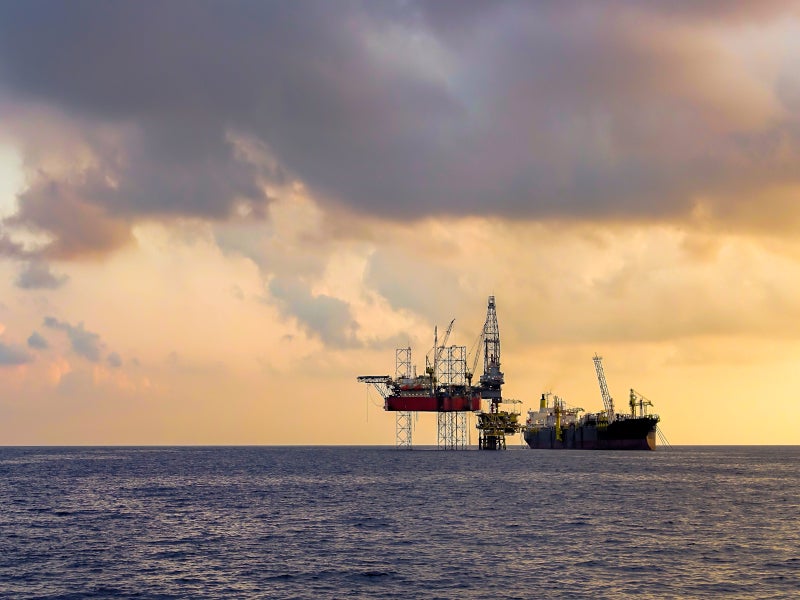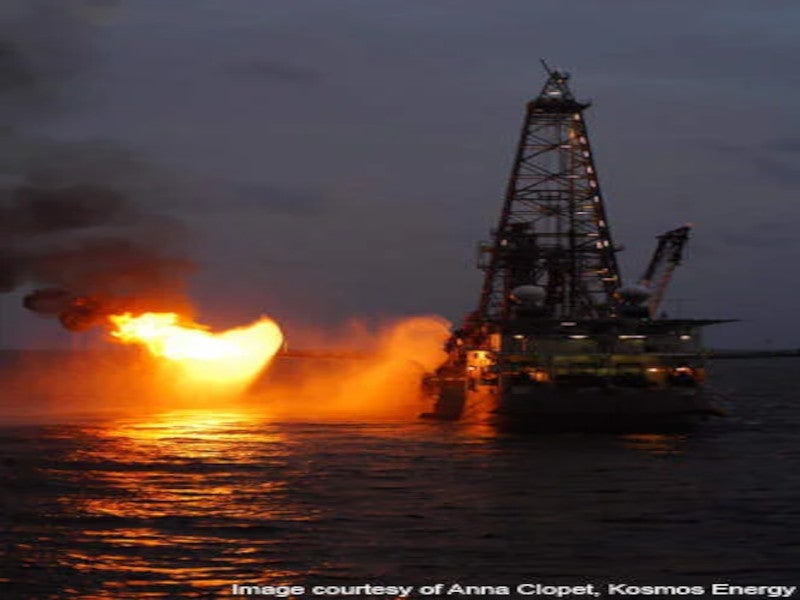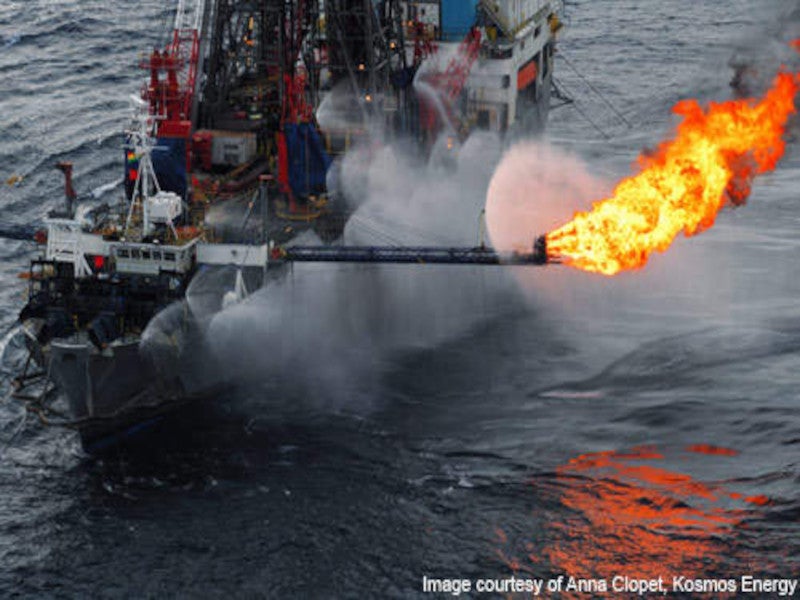The Jubilee field is located 60km offshore between the Deepwater Tano and West Cape Three Points blocks in Ghana at a water depth of 1,100m.
The field is jointly owned by the operator Tullow Oil (38.98%), Kosmos Energy (38.61%), Ghana National Petroleum (19.69%) and the Petroleum Oil and Gas Corporation of South Africa (PetroSA) (2.72%).
The field delivered its first oil in December 2010.
In 2021, Tullow, alongside its joint venture partners initiated the Jubilee South East (JSE) project development. In the latter half of 2022, two wells were drilled in the Jubilee South East region, followed by the drilling of a third well in January 2023.
The development was brought onstream in June 2023 and increased production at the Jubilee field to approximately 100,000 barrels of oil per day (bopd).
Jubilee discovery and appraisal
In 2007, the Mahogany-1 well discovered the Jubilee oilfield. This provided potential gas cap resources in the Mahogany-2 location.
Exploration found no gas cap at this location indicating further deep drilling. During the same year, the Hyedua-1 appraisal well confirmed that Jubilee was a world-class sweet oilfield.
The Blackford Dolphin and Eirik Raude rigs were engaged in development drilling activities at the Jubilee field. The Attwood Hunter rig, which arrived in March 2009, was dedicated to exploration and appraisal activities. Another rig, the Aban Abraham, reached the field at the end of 2009.
The Odum well in the West Cape Three Points block was drilled in February 2008. In June 2008, the Mahogany-2 well, the first appraisal well, was drilled to a depth of 3,443m in a water depth of 1,080m by the Songa Saturn drillship. The results confirmed the high productivity of the Jubilee field’s Turonian turbidite reservoirs, supporting its geological and reservoir model.
In July 2008, the results of a second successful flow test on the Mahogany-2 appraisal well were announced. The test, over a 23-metre perforated interval, yielded a flow rate of 4,448bopd of 39° API oil and approximately 5.1 million standard cubic feet per day (mscfd) of associated natural gas on a 36/64in choke.
In December 2008, the Hyedua-2 well, the second appraisal well in the Deepwater Tano licence, was drilled, revealing a gross reservoir interval of 120m with 55m of high-quality oil-bearing reservoir sandstones. The Blackford Dolphin semi-submersible drilled it to a depth of 3,663m at a water depth of 1,246m.
The Mahogany-3 well was drilled in January 2009, leading to the discovery of an additional extensive sand formation named Mahogany Deep. In October, the Mahogany-4 well was drilled, east of the Jubilee field to a depth of 3,680m, encountering 15m of net pay.
The Mahogany Deep-2 well was drilled in December 2009, 3km from Mahogany-3, and encountered 12m of net pay. The Odum-2 well, also drilled during the same month, found hydrocarbons.
Reserves
The Jubilee field’s recoverable reserves are estimated to be more than 370 million barrels, with an upside potential of 1.8 billion barrels.
Phase I development
In July 2009, the Energy Ministry of Ghana approved the Jubilee Phase I Development Plan and Unitisation Agreement. Under this plan, the Jubilee field was developed through an FPSO, delivering a plateau oil rate of 120,000bopd, water injection capacity of 230,000bwpd, and gas export and injection capacity of up to 160mscfd.
Four rigs were secured for the drilling activities with the work beginning in July 2009, and the delivery of first oil was achieved in December 2010. By May 2011, the field was producing 70,00bopd from five wells.
Jubilee FPSO
In October 2008, MODEC was awarded the engineering, procurement and construction contract to provide a floating, production, storage and offloading (FPSO) vessel for the Jubilee field. MODEC was also responsible for the operation and maintenance of the FPSO untilTullow took over the operatorship in July 2022.
The tanker vessel Ohdoh was converted for the Jubilee field and named FPSO Kwame Nkrumah MV21. The conversion process was completed in May 2010 at the Jurong Shipyard in Singapore. It included the installation of a water treatment plant, turret and a 120-room accommodation module. A crude separation plant, gas processing unit and a power generation plant were also installed.
The turret-moored FPSO was towed to its location in the Jubilee field in June 2010. At the field, the FPSO is linked to various production wells.
The FPSO was installed in November 2010, at a water depth of 1,100m. It is designed to operate for 20 years. The facility processes 120,000bpod and 160mscfd of gas and has a storage capacity of 1.6 million barrels of oil. It injects more than 230,000 barrels of water a day.
Contractors involved
Technip was awarded two contracts for engineering and fabrication of a total of 27km of risers, 48km of flowlines, 26km of umbilicals and other equipment. The company has also installed and tested the subsea equipment.
Technip subcontracted UTEC to provide survey and positioning services for the field.
Subsea 7 was awarded a $20m contract to provide a remote operating vehicle system for the Jubilee FPSO. i-Tech, a subsidiary of Subsea 7, supplied a 150hp Centurion QX work-class ROV system for the FPSO, under the contract.
In March 2010, Weatherford Pipeline & Specialty Services group won the contract for pigging of different flowlines at the field. The company also carried out testing of the flowlines, riser and jumpers and dewatering of the gas injection system.
TechnipFMC was awarded the integrated engineering, procurement, construction and installation contract for the Jubilee South East development.






